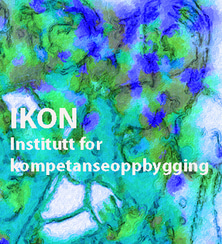The Psychology of the Brain
The Basis for a new Psychology
Philip Dammen
IKON
Institutt for kompetanseoppbygging (Norway)
ISBN number: 978-82-92977-10-1
Publisher: IKON Institute for competence building
Place of printing: Amazon
Font: Minion Pro 12 pt.
Year of publication: 2023, 1st edition
Editorial: Bokarbeid.no, IKON
Cover photo and typesetting: IKON Email: philipdammen4@gmail.com
Photo: Munch’s sun, photographed at the Munch Museum, October 2022
Preface
This book, "The Psychology of the Brain," focuses on how emotions and mental disorders are formed and what occursmentally when there is a change due to therapy. Brain psychology refers to the psychological factors that cause mental distress and the mental processes that contribute to psychological well-being or distress. One of the reasons for studying brain psychology is that psychology and psychiatry face scientific and therapeutic challenges that need to be resolved forthese fields to be scientifically sound and effective in treating mental health issues.
The books on the Psychology of the Brain and Linguistic Brain Therapy, LBT, are intended for individuals who desire tocomprehend the construction of psychological issues and the mental processes involved when undergoing psychological changes in therapy. They also offer guidance on self-improvement and assisting others, including clients, relatives, friends, therapists, psychiatrists, healthcare professionals, students, educators, researchers, politicians, athletes, coaches, and leaders.
The motivation behind this book is that finding solutions to the challenges in psychology and psychiatry is tied to developing scientific knowledge about what happens in the brain when an individual develops or overcomes mental distress. This contributes to advancing scientific understanding of mental disorders, mental changes, and effective treatment methods.
The need for knowledge about brain psychology is also linked to the high prevalence of mental distress and the increasingnumber of affected individuals. Despite the growth of psychologists and research in the field, a solid scientific knowledge base for psychology and psychiatry has not been successfully established. Furthermore, a scientifically valid, controllable, and predictable treatment for mental distress has not been achieved.
Psychologists, researchers, and therapists possess knowledge, but there is no certain understanding of how mental distressis mentally constructed or what occurs mentally during psychological changes in therapy. This is a widely recognized fact. Books on brain psychology and linguistic brain therapy (LBT) claim to have discovered reliable knowledge on how psychologically rooted ailments are mentally constructed and what happens mentally during psychological changes through treatment.
In the book on LBT, I demonstrate how it is possible to address the challenges faced by psychology and psychiatry and howthese fields can be developed to become scientifically solid. I believe that the knowledge presented in books on brainpsychology and LBT can bridge the gap between psychology, neuropsychology, and brain psychological research. This knowledge is crucial for tackling the challenges of psychology.
The book on brain psychology and LBT aims to help therapists treat mental distress more quickly, with better outcomes, andwith greater scientific certainty. It also aims to empower clients to develop a simple and scientifically informed understanding of their psychological issues, fostering optimism and belief in their ability to improve even in severe cases. Additionally, it aims to provide insight into how family members can support individuals with mental health problems. The goal is to convey knowledge that enables precise research on psychological distress as experienced by clients and the mental processes that occur during psychological changes in therapy.
Content
PART 1. INTRODUCTION
Chapter 1. Introduction to the psychology of the brain
Chapter 2. Influences from Therapeutic Traditions
Chapter 3. Therapeutic Experiences as Background
Chapter 4. The deficiencies of psychiatry and psychology
PART 2. THE BASIS FOR A SCIENTIFIC PSYCHOLOGY
Chapter 5. Key Concepts in Psychology of the Brain
Chapter 6. Theory Of Inner And Outer Empiricism
Chapter 7. The Theory of Biopsychic Units
Chapter 8. The Coupling Theory of Mental Distress
Chapter 9. The linkage theory of mental change
Chapter 10. The Significance of the Moment for Mental Distress
Chapter 11. The Significance of Language for Mental Distress
Chapter 12. The Physical and Mental Strategies for developing mental disorders
Chapter 13. The Significance of Transformation in Treatment
Chapter 14. The Therapeutic Resources
Chapter 15. Anti-Therapeutic Elements
Chapter 16. Development of Scientific Knowledge through Logic
Chapter 17. The Formulas for Mental Distress and Mental Change, X = ∑b
Chapter 18. The Psychological Attributes of the Brain
PART 3. THEORETICAL CONSEQUENCES
Chapter 19. Symptoms of Mental Disorders
Chapter 20. The prerequisites for a scientific diagnostic system
Chapter 21. Simplifications in Understanding Mental Distress and Change
Chapter 22. Differences between Brain Psychology and Other Psychology
PART 4. QUESTIONS, ANSWERS, AND CONCEPTS
Chapter 23. Questions and Answers Regarding Brain Psychology
Chapter 24. Glossary and term overview
Literature
Appendix


philipdammen4@gmail.com
(+47) 94294327
Socials
Contact
Philip Dammen, Dr. Philos
Founder of IKON / researcher, therapist, and emeritus assistant professor in pedagogy at the Norwegian Academy of Music


